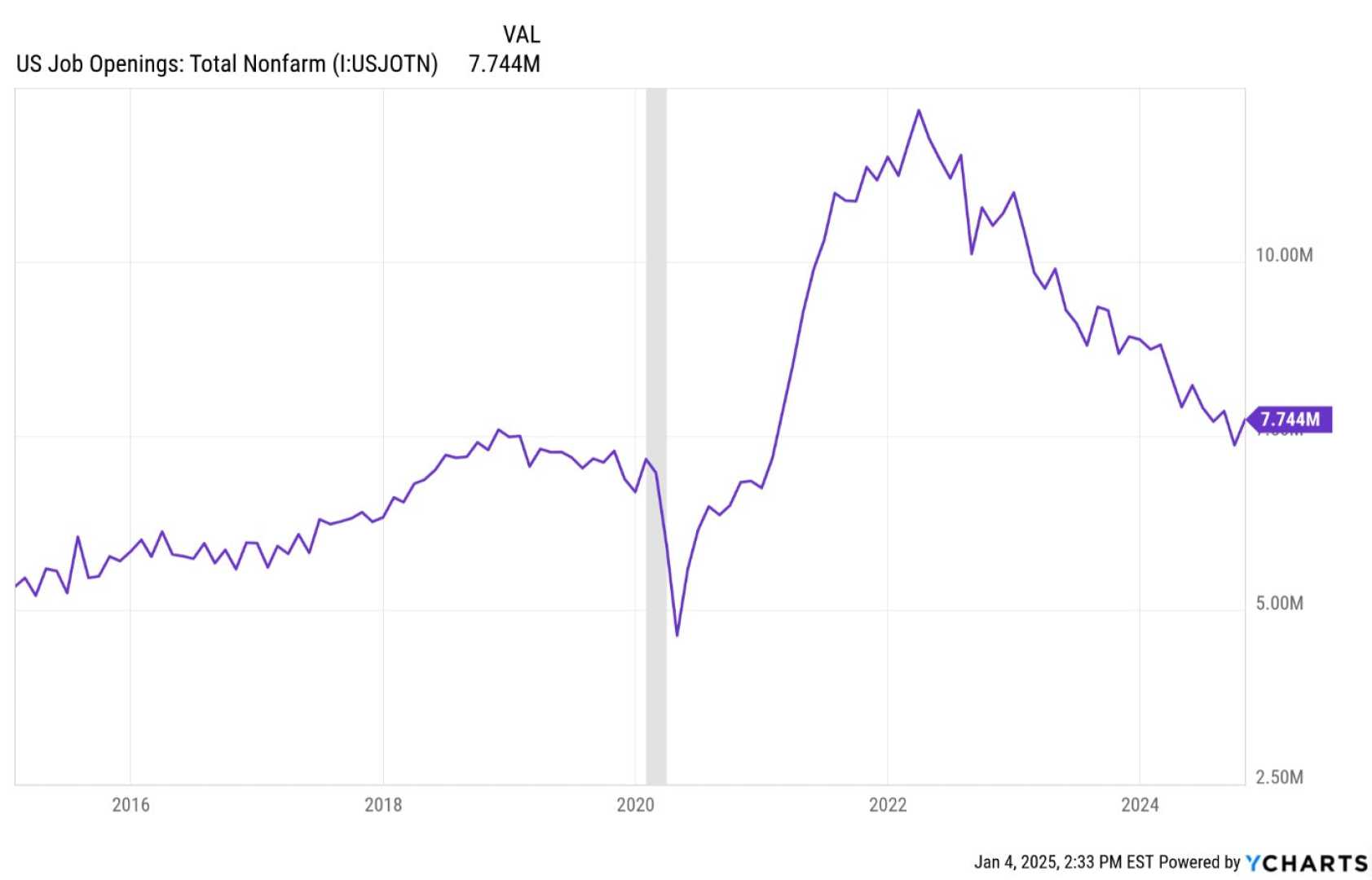Business
Job Openings Surge to 7.74 Million Amid Economic Uncertainty

WASHINGTON, D.C. — The latest Job Openings and Labor Turnover Survey (JOLTS), released Tuesday, reports a significant rise in U.S. job openings to 7.74 million in January, marking an increase from December’s revised total of 7.51 million.
This surge in job openings reflects renewed optimism among employers as they begin 2025. Economists had anticipated an increase to 7.7 million job postings, according to FactSet, signaling a slight upward adjustment from preliminary estimates.
Despite this positive trend, economists also caution that underlying uncertainties in economic policies, particularly those initiated by President Donald Trump‘s administration, may threaten overall labor market stability. Recent data shows that the broader unemployment rate, which includes part-time workers seeking full-time employment, rose to 8.0%, the highest level since October 2021.
“The economy faces rising uncertainty as it enters March,” remarked Conrad DeQuadros, senior economic advisor at Brean Capital. “While the job openings might appear positive on the surface, the overall labor market signals are worrying.”
The JOLTS report typically acts as a key indicator for labor market activity in the United States, including job openings, hires, quits, and separations. However, its delayed release by a month means its data is often separate from the more immediate job growth report.
In tandem with job openings, the U.S. economy added 151,000 jobs in February, as reported by the Labor Department. Although an improvement from a revised 125,000 jobs in January, this figure fell short of economists’ expectations of 170,000 new job additions.
“This shows a rapid cooling in the labor market, but no immediate recession signals are present,” noted Scott Anderson, chief U.S. economist at BMO Capital Markets. The unemployment rate edged up to 4.1% in February from 4.0% in January.
The impact of government policies on the labor market is becoming increasingly evident. Recent attempts to reduce government employment through mass layoffs in federal agencies have been linked to a labor force shrinking of 385,000 individuals in February. Additionally, 10,000 federal jobs were lost, reflecting the effects of the Department of Government Efficiency, or DOGE, spearheaded by Elon Musk.
Healthcare led job growth, adding 52,000 positions, while financial activities and transportation sectors also reported gains. However, the retail sector experienced a loss of 6,000 jobs, primarily impacted by a recent strike at a major supermarket chain.
The labor market trends indicate a growing mix of signs, with some sectors exhibiting growth while others reflect strain and uncertainty. Federal Reserve officials will closely monitor these developments in the upcoming March 18-19 meeting, where interest rates may remain unchanged amidst rising inflation concerns.
Average hourly earnings increased by 0.3% in February, aligning with expectations, while annual wage growth matched a moderate pace of 4.1%.
<p“As employers appear to be cutting back on hiring while adjusting work hours, it raises concerns about long-term labor force participation,” explained Julia Pollak, chief economist at ZipRecruiter. “Employers may be hesitant to bring on new employees amid the current economic landscape.”
This story is still developing, and further updates will be provided as new information becomes available.












